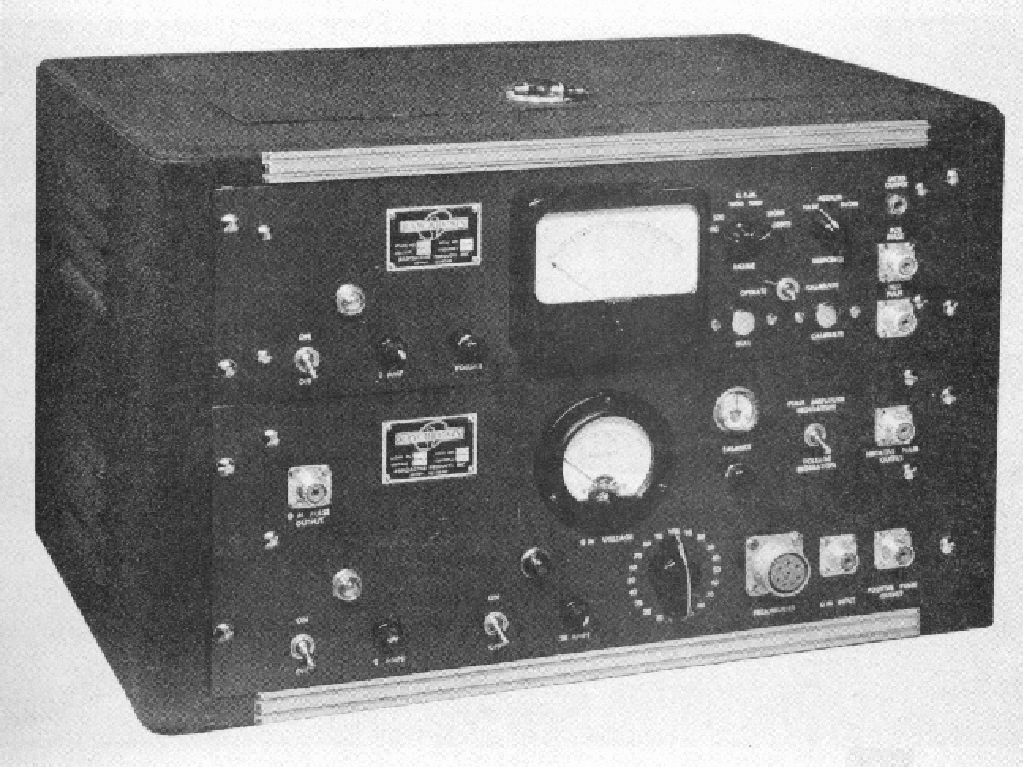
Radioactive Products
Radioactive Products was started in 1948 as a contractor for specialty instruments to the oil well industry. Radioactive Products was located at 3201 East Woodbridge Street in Detroit, Michigan. The company began selling radiation meters in 1950. In 1950, their address was 443 W. Congress Street, Detroit.

Radioactive Products Model C-2 1950
The Raychronix Model D1 was introduced in 1950 as a beta-gamma survey meter. The unit was an ionization type battery operated unit with a pistol grip. It predecessor was the Oak Ridge Cutie Pie and was used at the Los Alamos National Laboratory in 1954. The ion chamber has a 600 cc volume and is 3” in diameter x 6" long. The unit was calibrated with a Bureau of Standards certified radium source. The end of the chamber has a 3" thin pliofilm window. It has a cast aluminum case. The batteries are located in the handle. The positive internal pressure is maintained by a naphthalene moth ball mounted in the case. This help avoid “breathing” problems associated with high humidity. It has three-decade ranges from 50 to 5,000 mR/h. It uses one 1.5 and four 22.5 volt batteries. The unit is 11” long x 3” wide x 8” high and weighs 2.5 lbs.
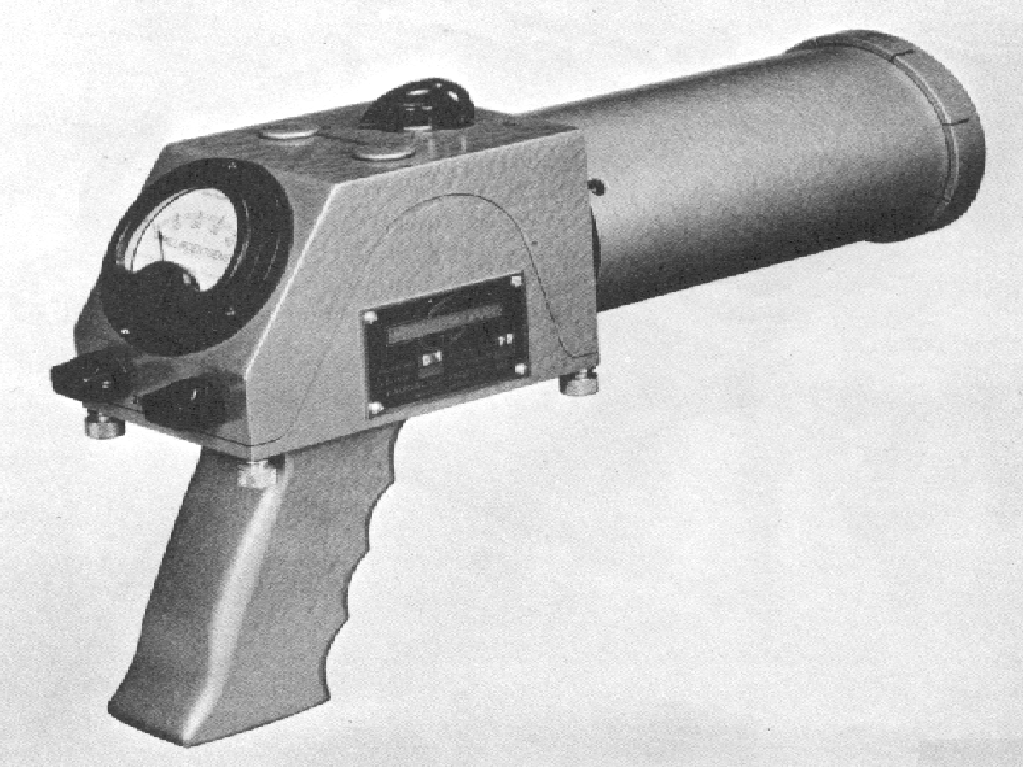
Radioactive Products Model D1 1950
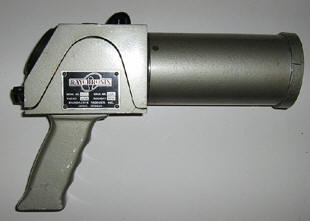
Radioactive Products Model D1 1950's
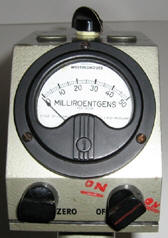
Radioactive Products Model D1 1950's
The Raychronix Model D-1A Cutie Pie Survey meter was introduced in 1953. It had an ionization chamber with a beta ray end window. It had two ranges of 50 mR/h and 5 R/h. The unit weighed 2.5 lbs.
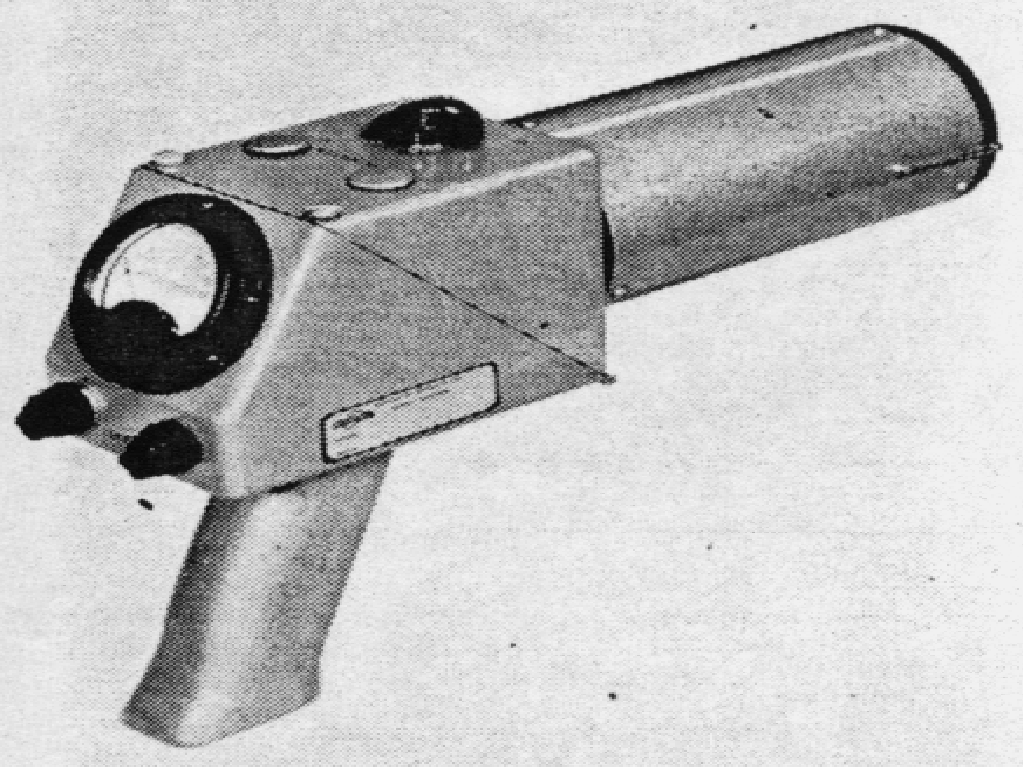
Radioactive Products Raychronix Model D-1A 1953
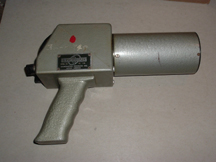
Radioactive Products Raychronix Model D-1A 1953
The Samson alpha survey meter was developed in the 1950's. It has an internal air ionization chamber and some units came with an optional auxiliary probe for beta and gamma monitoring. It had three ranges x1, x5 and x25. It was 8.25” long x 5-1/8” wide x 7.25” high and weighed 5 lbs. The chamber is sensitive to alpha, beta and gamma but only calibrated for alpha.
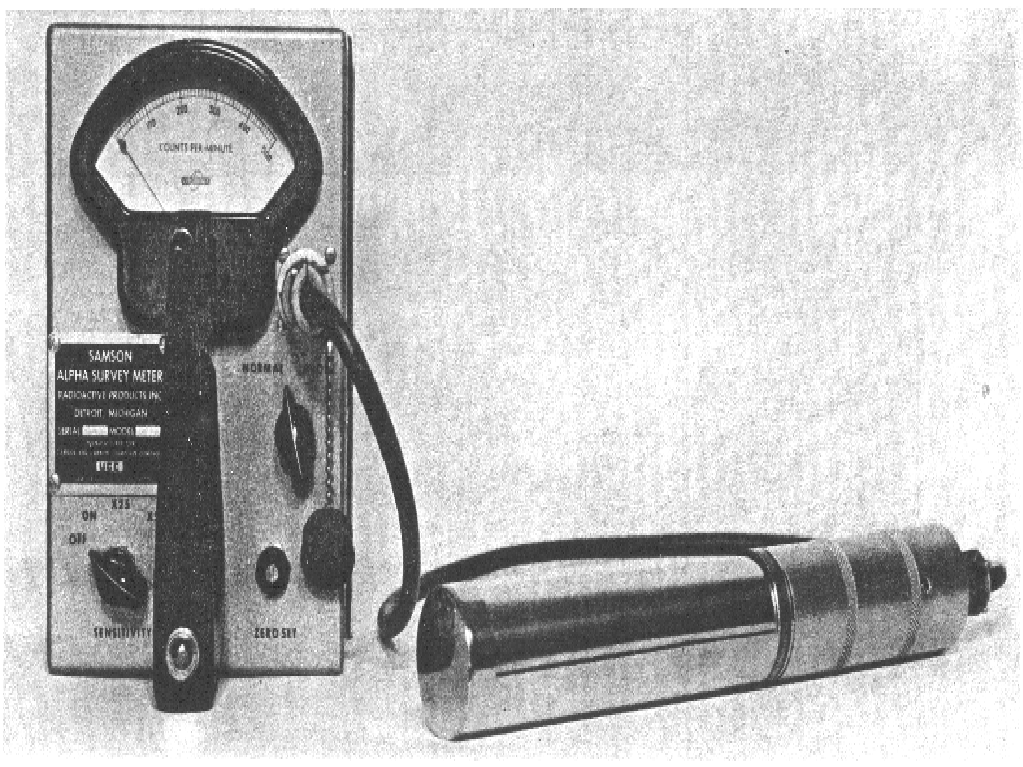
Radioactive Products Samson 1954
The Raychronix Model D-5 Samson Alpha survey meter was introduced in 1953 for locating low level contamination. The Sampson was named after the Biblical hero or possibly an acronym for “son of standard alpha monitor”. It was advertised as “fast-easy contamination monitoring”. It had an ion chamber window which passes alphas down to 2 MeV and betas down to 0.05 MeV. Ranges were 0-500, 2500 and 12,500 cpm for alphas. Corresponding radium gamma ranges were 0.0.7, 3.5, and 17.5 mR/h. It advertised an 8-hour drift of only 10% full scale. It weighed 5 lbs., had a large 4”x5” ion chamber window, and 6” fan meter. The bottom of the unit had a stainless steel screen with 80% open area. It was designed for ease of decontamination where the screen could be removed.
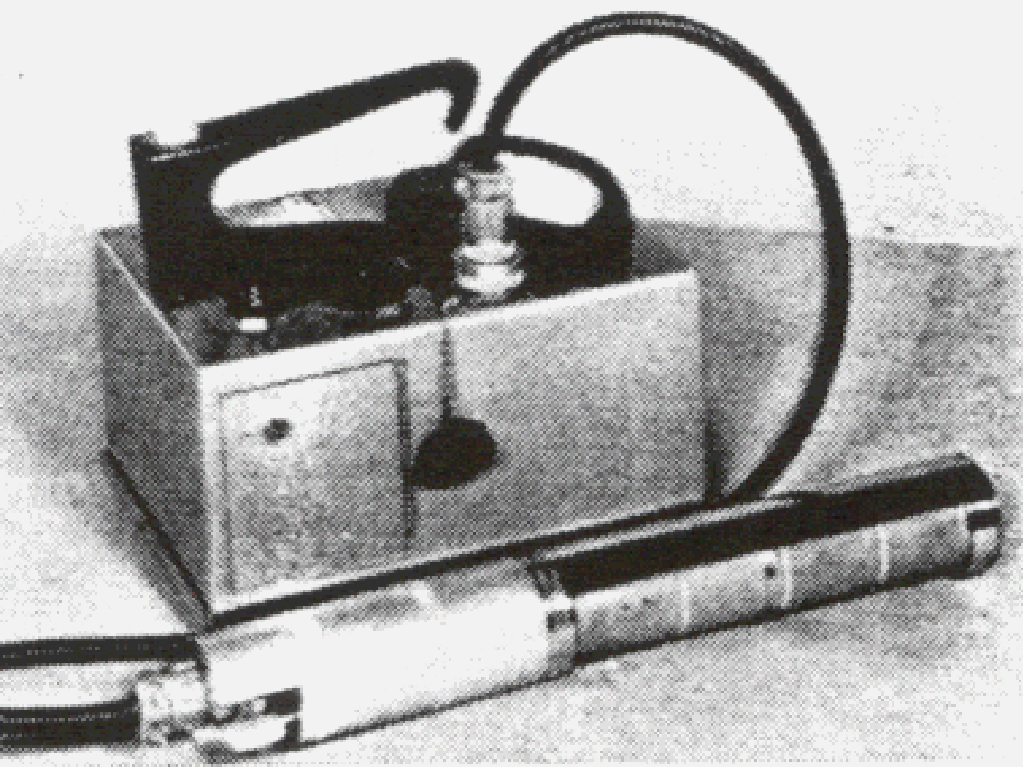
Radioactive Products D-5 Samson 1952
The model D-5A probe, available in 1952, was an optional beta-gamma probe which is shown in the picture. The probe contains a freon-filled ionization chamber with a rotating stainless steel shield for beta discrimination. The probe extends the Samson range from 0.25, 1.25, 6.25, 25, 125 and 625 mR/h. A D-5B probe was also offered. When using both probes, it was possible to detect low level alpha contamination up to 625 mR/h gamma. The instrument could be used to monitor flat and irregular surface, holes and corners. Included is a metal plug-in battery box, a roll over bottom stainless steel screen to minimize contamination traps, and a flashing light to indicate unit operation.
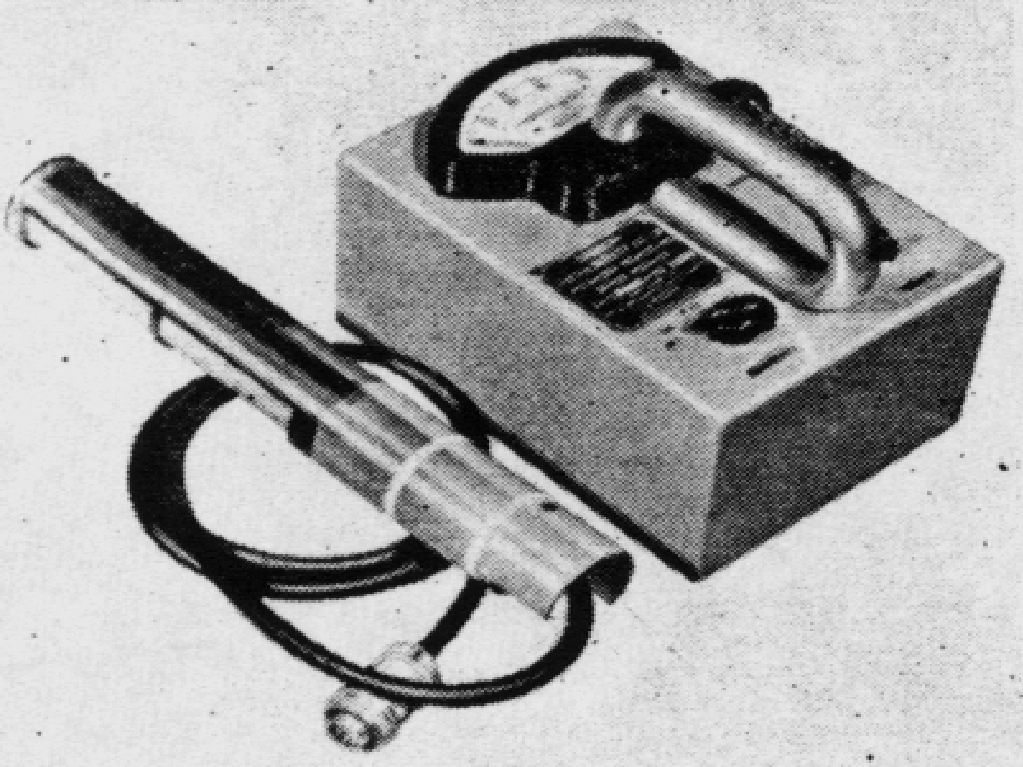
Radioactive Products Samson and D-5A Probe 1952
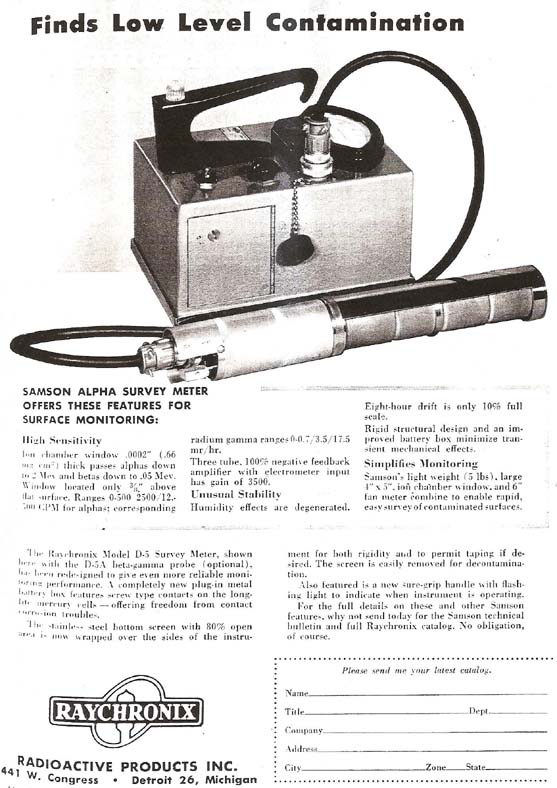

Radioactive Products Samson and D-5A Probe Ads 1953
The Samson D-3 was introduced in 1952 as an alpha survey meter. The range was 0-500, 0-2500, and 0-12,500 cpm. Background is 2 cpm. Alphas with energies greater than 2 MeV will penetrate the thin window. An ionization chamber is located on the bottom for tabletop monitoring. There is a connector for adding an external probe for checking irregular surfaces. The Samson Alpha D-3 could be used with the D-5A beta gamma probe. It contained a freon-filled ionization chamber and an electrometer preamplifier. It had a rotating stainless steel shield for betas. The probe extends the Samson range to 0.25, 1.25, 6.25, 25, 125, and 625 mR/h.
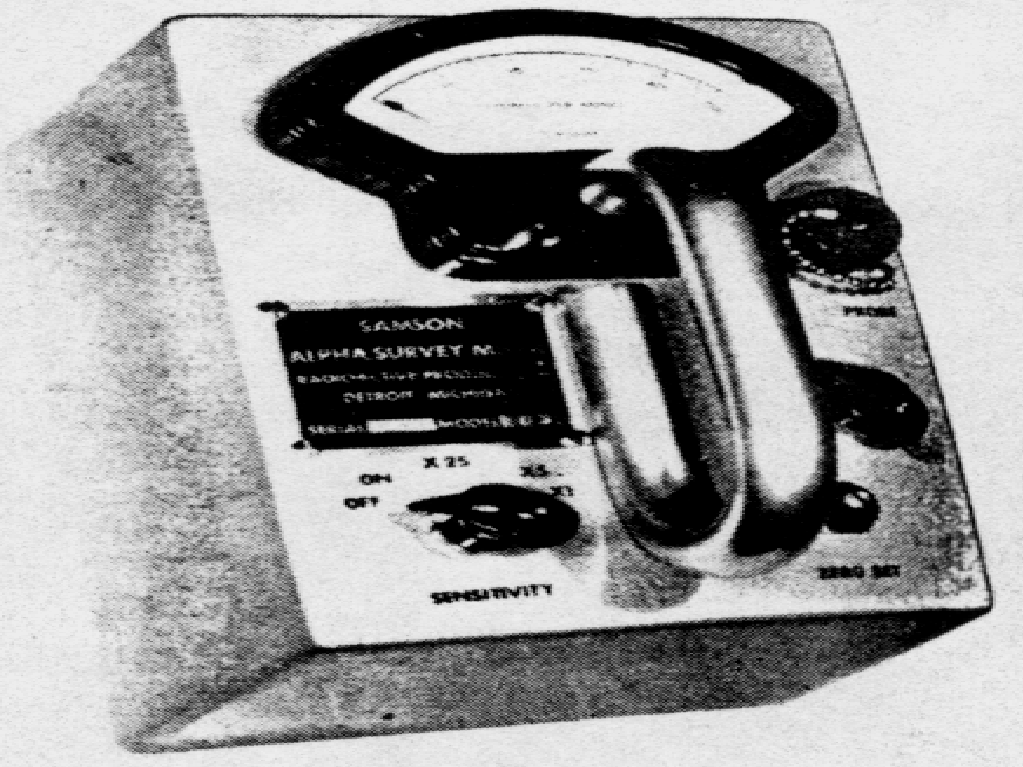
Radioactive Products Samson Alpha D-3 1952
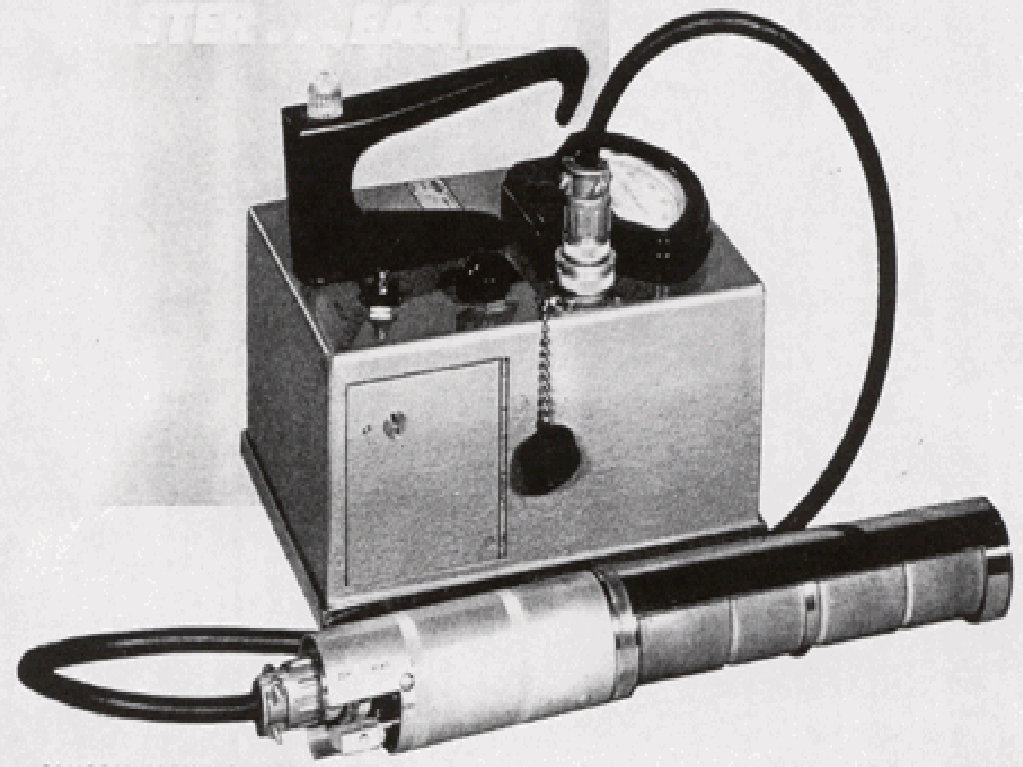
Raychronix Samson D-5 Alpha 1953
The Raychronix “Rudolph” Fast Neutron Dosimeter Model E-1 was offered in 1952. It was sensitive to 0.2 to 10 MeV neutrons. It was a dosimeter designed to measure dose rate directly, even in a large gamma-ray field. The unit detects fast neutrons only. It uses a proton recoil proportional counter. The response was proportional to tissue sensitivity. It had four ranges 5, 50, 500 mR/h and 0-200 integrated total count, about 0.5 mR. The levels are based theoretical and experimental research at Oak Ridge National Laboratory. A proton recoil proportional counter containing (a) a hydrogenous gas filling (b) two polyethylene radiators, (c) an aluminum beta absorber, produce the unusual characteristics. The counter has 2:1 directional response and 10:1 pulse amplitude gamma discrimination. It is package in two lightweight units with combined weight of 10 lbs. for ease of operation.
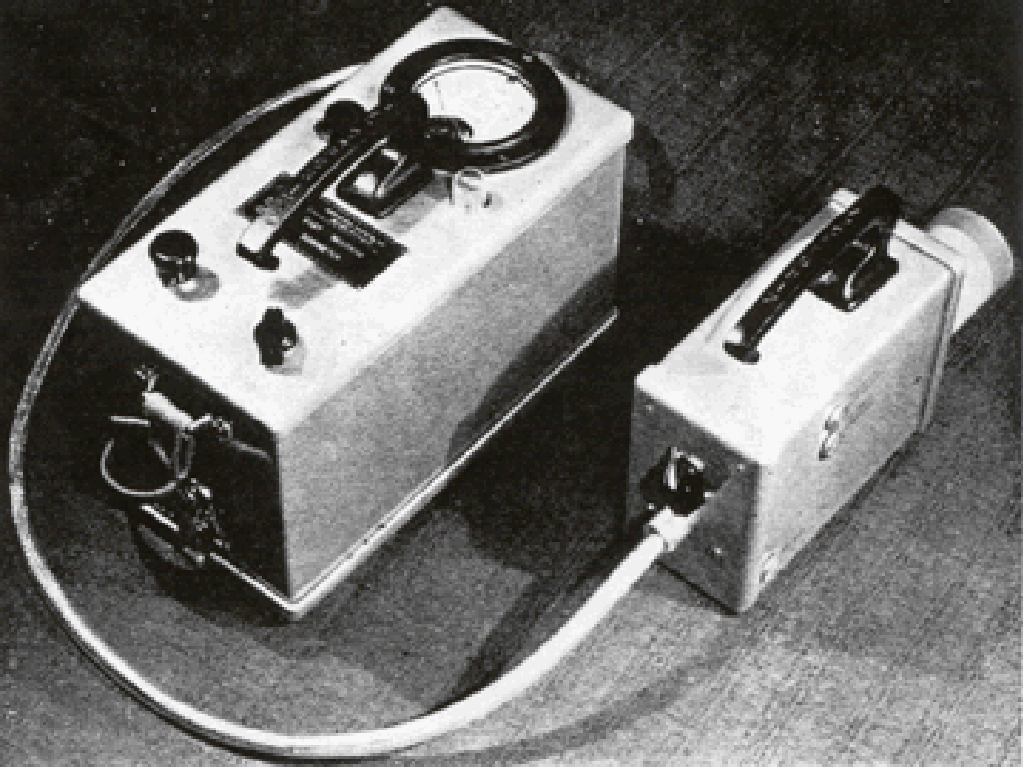
Raychronix Rudolph Model E-1 1952
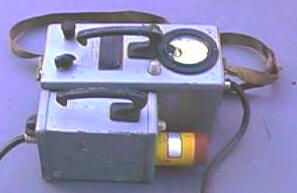
Raychronix Model F-1 1952
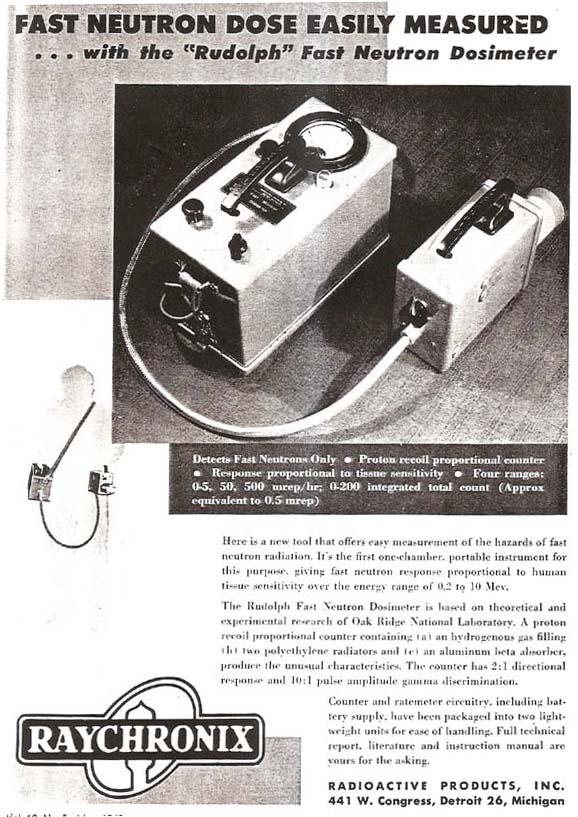
Raychronix Model F-1 Rudolph Ad 1952
The Fast Neutron Dosimeter was offered in 1954 to measure dosage rates for fast neutrons. It has a proton recoil proportional counter. The unit had three ranges from 5, 50 and 500 mR/h. The main unit is 4-3/8” x 5.5”x 10”. The counter unit was 3” wide x 5” high x 6.5” long and weighed 10 lbs.
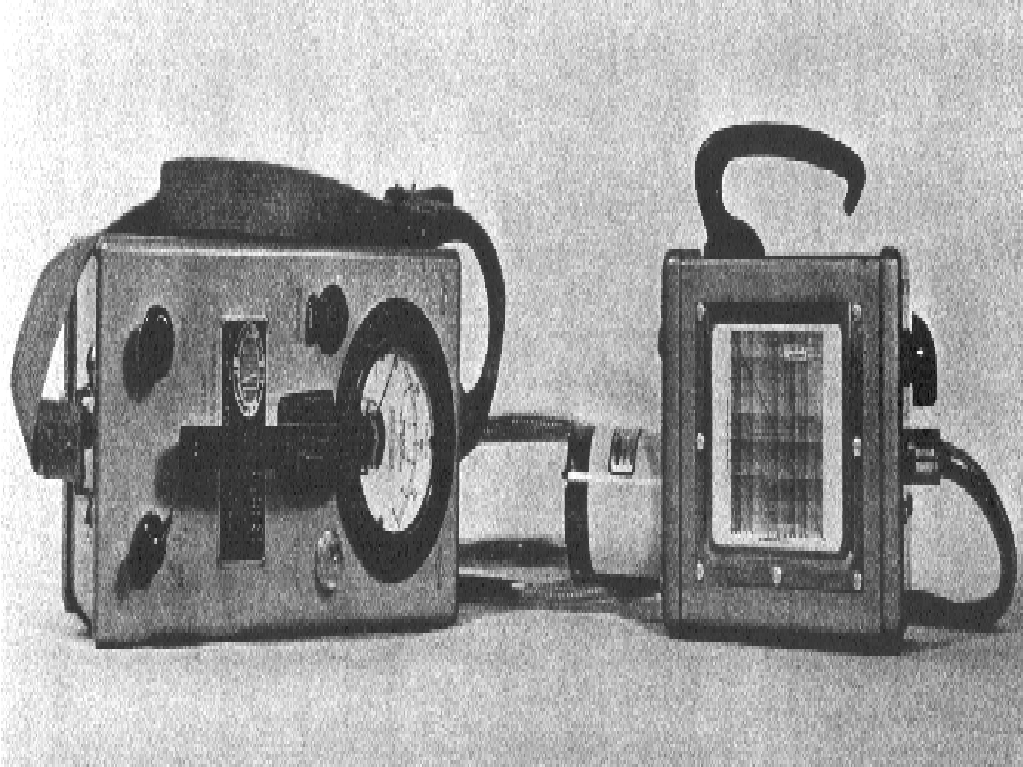
Radioactive Products Fast Neutron Detector 1954